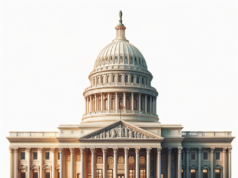In recent months, a wave of legislative changes has swept across various states, prompting significant shifts in legal frameworks that govern societal interactions, economic activities, and community relations. These modifications, often enacted with the intention of addressing pressing social issues or economic challenges, have sparked widespread debate and concern among citizens, lawmakers, and advocacy groups alike. As states navigate the complexities of these new statutes, it is crucial to understand their implications and the broader context in which they were introduced.
Understanding the Context: Recent State Statute Changes and Their Rationale
The recent changes to state statutes have emerged from a confluence of factors, including public demand for reform, shifts in political power, and evolving societal norms. Lawmakers have sought to address issues such as criminal justice reform, environmental regulations, healthcare access, and labor rights, often citing the need for modernization and responsiveness to contemporary challenges. For instance, states have begun to revise outdated laws that disproportionately affect marginalized communities, while others have enacted measures aimed at stimulating economic growth in response to the lingering effects of the COVID-19 pandemic. However, the rationale behind these changes is not universally accepted, with critics arguing that some amendments may exacerbate existing inequalities or create new challenges.
Key Areas Affected: Analyzing the Scope of Recent Legislative Amendments
The scope of recent legislative amendments is vast, touching on numerous key areas including criminal justice, healthcare, education, and environmental policy. In criminal justice, several states have moved to decriminalize certain offenses, reform bail practices, and enhance rehabilitation programs, reflecting a growing recognition of the need for a more equitable justice system. In healthcare, new statutes have expanded access to services and sought to lower prescription drug costs, while educational reforms have aimed at increasing funding for public schools and addressing disparities in educational outcomes. Environmental legislation has also seen a surge, with states implementing stricter regulations on emissions and promoting renewable energy initiatives. Each of these areas reflects a targeted effort to address specific societal needs, but the effectiveness and unintended consequences of these changes remain to be seen.
Economic Implications: How New Statutes Influence Local and State Economies
The economic implications of the recent state statute changes are profound and multifaceted. On one hand, reforms aimed at stimulating economic growth, such as tax incentives for businesses and investments in infrastructure, have the potential to create jobs and enhance local economies. Conversely, some amendments, particularly those related to labor laws and environmental regulations, may impose additional burdens on businesses, leading to concerns about job losses and reduced competitiveness. For instance, increased minimum wage laws, while beneficial for workers, may compel small businesses to reevaluate their operational models. The interplay between these economic factors necessitates careful monitoring and analysis to ensure that the intended benefits of legislative changes do not inadvertently stifle growth or lead to economic disparities.
Social Consequences: The Impact of Statute Changes on Communities and Individuals
The social consequences of recent state statute changes are equally significant, affecting the lives of individuals and the cohesion of communities. Legislative amendments aimed at enhancing social justice and equity have the potential to empower marginalized populations, providing them with greater access to resources and opportunities. However, the implementation of these changes can also lead to social friction, particularly in communities resistant to reform. For example, changes in policing practices have sparked both support and backlash, highlighting the deep divisions that can arise in public opinion. Furthermore, as communities adapt to new laws, there may be a period of adjustment that could temporarily disrupt social dynamics, necessitating ongoing dialogue and engagement among stakeholders to foster understanding and collaboration.
Legal Ramifications: Navigating the Challenges of New Statutory Frameworks
The legal ramifications of recent state statute changes present a complex landscape for individuals, businesses, and legal practitioners. As new laws are enacted, the challenge of compliance becomes paramount, with many stakeholders grappling with the nuances of the revised legal frameworks. For businesses, this may involve re-evaluating operational practices to align with new labor laws or environmental regulations, while individuals may face uncertainties regarding their rights and responsibilities under the amended statutes. Additionally, the potential for litigation increases as parties seek to challenge or interpret the new laws, creating a dynamic legal environment that requires vigilance and adaptability. Legal professionals must stay abreast of these changes, providing guidance and representation to clients navigating the evolving landscape.
Future Outlook: Predicting Long-Term Effects of Recent State Statute Changes
Looking ahead, the long-term effects of recent state statute changes are likely to be profound and far-reaching. As these laws take root, their impact on economic stability, social equity, and community cohesion will become increasingly apparent. The success of these legislative amendments will largely depend on effective implementation, ongoing evaluation, and the willingness of stakeholders to engage in constructive dialogue. Moreover, as states continue to confront emerging challenges, such as climate change and public health crises, the adaptability of these new statutes will be tested. Policymakers must remain vigilant, ensuring that the laws enacted today are not only responsive to current needs but also resilient enough to withstand future pressures.
In conclusion, the recent changes to state statutes represent a significant shift in the legal and social landscape, with implications that will reverberate for years to come. As communities grapple with the realities of these amendments, it is essential for all stakeholders—lawmakers, businesses, and citizens—to engage in informed discussions about their impact. By fostering a collaborative approach to navigating these changes, states can work towards creating a more equitable and prosperous future for all. The road ahead may be fraught with challenges, but it also holds the promise of meaningful progress and transformation.





























































